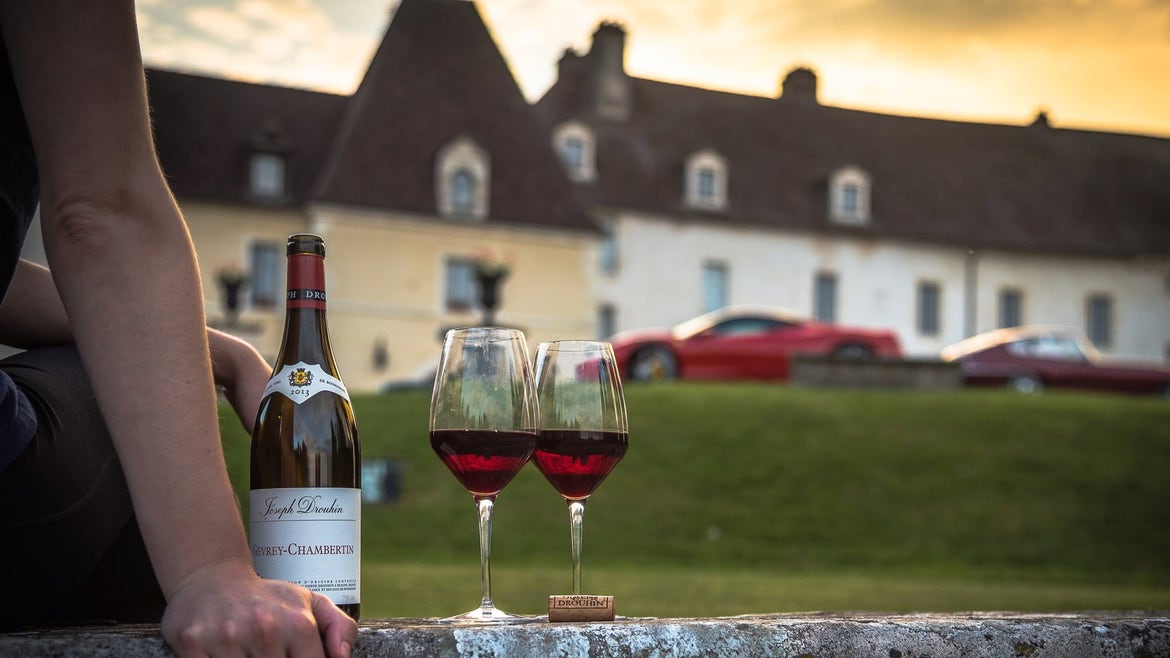Fascinating French Wine
Joie de vivre in liquid form
France and Paris conjure images of good food, love, holidays and, above all, wine. Statistically, the French drink around 41 litres of wine per capita every year. Good food and wine from their own country are part of French tradition. France is the second-largest wine producer worldwide and French wine inspires connoisseurs.
French wine - quality and variety
France's wine landscape is characterised by different soils, diverse grape varietals and interesting wine styles. Around 70% of French wine is red, but these wines typically contain different grapes. The climate (Mediterranean or mountainous) and various soil types such as limestone, sandy gravel, clay, loam and slate significantly influence the type of wine.
Famous areas
In France, there are 10 important wine-growing regions with famous representative wines, such as Beaujolais or Bordeaux. In the former, the delivery of the first young wine (Primeur) takes place on the third Thursday in November. This light red wine has many international fans. In Bordeaux, on the other hand, strong red wines are mainly produced from Cabernet Sauvignon and Merlot, including, for example, top wines from Château Margaux.
Burgundy, a province in eastern France with many small wineries, is known for its reds made from Pinot Noir, which are rich in finesse. Some of the best whites in this region are Chardonnays. Also in this area, Champagne produces, among other things, the world-famous champagne using these aforementioned grape varietals.
Châteauneuf-du-Pape, a French red wine from the Rhône Valley, is made from multiple grape varietals. A well-known representative white wine from France is Riesling, which mainly comes from the Alsace region. The slim shape of the bottle, the so-called Alsatian flute, is typical of these wines.
French wine and its quality levels
Wine production in France is subject to precise regulations. The quality of the respective wines, whether red, rosé or white wine, is divided into four levels:
The first level is the Vin De Table (table wine), which includes simple wines whose regional origin is not specified. The bottle only say that they are from France.
Vin de Pays (country wine) is one step up. Even if these wines (mostly reds) may be blended, the respective region of origin must be indicated on the bottle. Vin de Pays wines often come from the south of France and are valued for their approachability.
The top wines
Better, higher-quality wines can be found in the Vin Délimité de Qualité Supérieure (VDQS) quality level. Translated, this means something like wine of a higher quality from a limited growing area. These often quite demanding wines are subject to strict quality controls. They are mainly found in central France and Provence.
The very best wines fall under the category Appellation d'Origine Contrôlée (AOC), the so-called controlled designation of origin.
The French National Institute of Origin and Quality establishes the following criteria for AOC certification:
- The cultivation area, municipality and vineyard must designate a strictly defined area. This must be noted on the label.
- The grape varietals, the maximum number of vines and their pruning method, as well as the maximum yield per hectare, are also specified.
- The minimum sugar content (in the must) and the minimum alcohol content are also prescribed.
- Certain processes are permitted for winemaking.
All French wine-growing regions mentioned in this article belong to the AOC, the Appellation d'Origine Contrôlée.
Summary
It is not without reason that French wine is regarded by experts as a benchmark for the best wine. France promotes the highest competence in wine cultivation. The wine-growing tradition that the ancient Romans brought to France is still alive today, and the diverse climatic and geological conditions of the different regions of France are ideal for the cultivation of high-quality wines.
Related products
-
 4.7 (35)
4.7 (35)Champagne Gosset Champagne Grand Reserve Brut, 3 L
- Signature Cuvée champagne
- Bottle aged for over 4 years
- Very elegant & fresh
€ 319,99 (€ 106,66 / L)Delivery by January 03
-
Magazine Articles:
-
Austria: Free standard delivery from € 49,90
-
We operate in a
climate-conscious manner. -
Free
returns Secure payments
with SSL encryption technology



